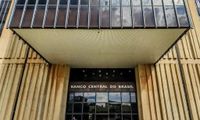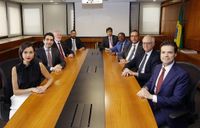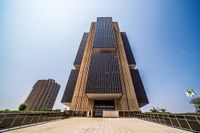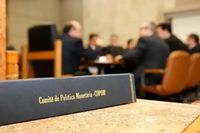In a pivotal move for Brazil's economy, the Central Bank's Monetary Policy Committee, commonly known as Copom, has raised the basic interest rate, the Selic, to 14.25% per annum. This decision, made on March 19, 2025, marks a significant increase of 1 percentage point from the previous rate of 13.25% and is the highest level seen since 2016. This hike represents the fifth consecutive increase aimed at combating soaring inflation that is exceeding government targets.
This latest adjustment is significant, reflecting the pressing economic situation in Brazil where inflation has continued to rise sharply. In February 2025 alone, the National Consumer Price Index (IPCA) increased by 1.31%, the largest surge for February noted in 22 years. The cumulative inflation over the past 12 months now stands at 5.06%, which notably surpasses the Central Bank's annual target of 3%, with a permissible maximum of 4.5% due to the tolerance levels in place.
The decision was unanimously reached by all nine members of the Copom, including president Gabriel Muricca Galípolo. Prior expectations for this increase were high, especially given previous indications from the committee that an uptick would be likely in the months ahead. According to various economists, this increase was highly anticipated and aligns with the Copom's ongoing strategy to rein in inflationary pressures.
The Copom has also hinted at the possibility of a smaller adjustment during its next meeting scheduled for May 2025, signaling that the cycle of interest rate raises may not be over. As economic conditions fluctuate, the committee believes further monitoring of the inflation landscape is critical. This sentiment is echoed in a statement from the committee that acknowledged enduring uncertainties stemming from global economic conditions, specifically from the United States.
Gabriel Galípolo remarked, "O Comitê avalia que o cenário externo segue exigindo cautela por parte de países emergentes." This illustrates the careful consideration given to external pressures impacting economic recovery and policy-making.
Economically, the implications of higher interest rates are multi-faceted. According to Bernardo Marangon, an expert in the electricity sector, the recent increases in Selic will enhance the attractiveness of fixed-income investments. However, they will also raise public debt costs and diminish liquidity in the economy, thereby applying downward pressure on consumption and investment. "Se os desequilíbrios fiscais persistirem, o Banco Central pode ser forçado a manter os juros elevados por mais tempo para conter a inflação," Marangon added, underscoring that the fiscal balance will play a crucial role in determining the trajectory of interest rates going forward.
The context in which these changes are occurring is critical. In 2016, Brazil last saw these interest rate levels, and back then a prolonged era of low rates led to more abrupt adjustments when inflation returned. Today, while the economy shows signs of recovery, rising interest rates pose challenges for various sectors, notably for investors in renewable energy projects. Higher capital costs could deter funding for long-term projects, affecting the sector's growth prospects.
Looking toward the future, the Copom is preparing for potential adjustments in its approach depending on how the inflationary environment evolves. The committee’s current projections indicate that inflation could reach 3.9% by the third quarter of 2026, detailing their commitment to managing inflation expectations and balancing economic growth.
The unanimous decision among committee members stresses the urgency of controlling inflation amid rising labor market pressures, as well as concerns about the global economic outlook. The Copom's continued vigilance over fiscal developments is essential, with fluctuating expectations influencing the financial landscape significantly.
As the economic cycle turns, Brazil faces profound challenges and opportunities. The heightened Selic rate serves as a reminder of the tight balance authorities must maintain between fostering growth and curbing inflation. Businesses and consumers alike will need to navigate this new financial landscape as the implications of rising interest rates unfold across the economy.
In summary, the Copom's increase in the Selic rate to 14.25% stands as a testament to Brazil's ongoing battle against inflation, reflecting broader economic stressors and uncertainties. The coming months will reveal how these measures will shape the national economic landscape and what it means for the everyday Brazilian.







